I recently started reading Gretchen Rubin’s The Happiness Project, which I wanted to read before checking out her latest book, Better Than Before. The latter focuses on positive habit-forming, which is a perennial fascination of mine: I’m basically a sucker for any sort of self-help book that suggests you can improve your life by honing your habits. But I decided to read The Happiness Project before Rubin’s newer book, even though both books arrived at the library at the same time. Now that I’ve started The Happiness Project, I think I’ll return Better Than Before and then re-request it later, as I’m not sure even I could stomach two self-help books in a row.
I’m enjoying The Happiness Project, but I can’t say I’ve learned anything new from the first fifty-some pages: so far, Rubin is revisiting familiar territory. But this is, after all, one of the things that I like about self-help books: they’re easy to read (basically, a guilty pleasure) because they reinforce the things I already know even if they’re things I’m not currently doing.
Reading a self-help book is like watching a workout DVD while lounging on the sofa eating bonbons: everything (including exercise) looks easy when you sit and watch it, but getting up and doing it is a different story. Much of the research Rubin cites in The Happiness Project is stuff I’ve already read: I’ve read classics such as Ben Franklin’s Autobiography and Henry David Thoreau’s Walden along with newer titles such as John M. Gottman’s The Seven Principles for Making Marriage Work. (Spoiler alert: the latter didn’t save my first marriage, but it did help clarify what was wrong with it.) I’ve also read Martin Seligman’s Authentic Happiness: I did, after all, briefly train to become a life-coach, a career I back-burnered after realizing I’m not good at marketing myself. So the information Rubin shares isn’t exactly new if you’ve read these various works she’s referencing; what she does, though, is offer a new configuration of the same old ideas.
What fascinates me so far about The Happiness Project is its central premise that we can be happier if we understand and employ the specific techniques that make people happy. This belief in personal perfectibility–the notion that the human psyche is a machine, and if we understand its inner workings, we can fine-tune it to work better and more efficiently–is pervasive in self-help literature. This belief in personal perfectibility is also quintessentially American, a psychological version of the American dream: “If I work hard enough, I too can make myself into a better, happier person.”
I recognize this optimism as a cultural myth, an idea deconstructed in Barbara Ehrenreich’s Bright-Sided: How the Relentless Promotion of Positive Thinking Has Undermined America as well as Oliver Burkeman’s The Antidote: Happiness for People Who Can’t Stand Positive Thinking, both of which I loved. (You can read my review of Burkeman here.) But even though I fully understand the cultural mythology and outright error endemic in self-help books, I still find myself consuming them like candy, finding an escapist joy in the irresistible belief that we can make ourselves better. For me, self-help books are like fairy tales for grown-ups, offering the bewitching hope that you can be your own Prince Charming, sweeping yourself off to a happily-ever-after world where your closets are organized, your marriage is blissful, and your body is beautiful, well-rested, and well-toned.
The irony, of course, is that I’m a Buddhist, and Buddhism basically throws a bucket of cold water on self-helpism. Buddhism in general and Zen Buddhism in particular focus on what is, not what could be if only you employed a system of resolutions and self-help strategies. The ultimate statement of “what is” is the Buddha’s First Noble Truth, which bluntly observes that Suffering Exists. Contemplating your messy closets, listless marriage, or sagging body, a self-help guru would whip up an action plan to get your you, your relationships, and your closets back in shape. A Zennie, on the other hand, would commiserate without blame: Yes, sweetheart, it be’s that way sometimes.
Zen isn’t philosophically opposed to helping yourself; Zen, in fact, isn’t philosophically opposed to much of anything. My Inner Zennie accepts with bemused equanimity the fact that hope really does spring eternal: after all these years of failed attempts, I still hold out hope for getting my junk drawer organized. What my Inner Zennie knows that my Inner Self-Helper is loathe to admit, however, is that happiness isn’t contingent on tidy closets: I can find serenity in a cluttered house, and I can be miserable in a perfectly clean one. My Inner Zennie, in other words, knows that happiness dwells in the Here and Now, regardless of how many things my Inner Self-Helper wants to fix. Samsara is indeed Nirvana, so go ahead and either clean your closets or let them be: it’s your choice. At the end of the day, a Zennie doesn’t ask herself “Are my closets tidy” but “Who am I?”
So who am I? The asker of that question has perpetually cluttered closets and an insatiable belief that someday, somehow, they might be tidy. That riddle wrapped in a mystery inside an enigma loves to read books like The Happiness Project while wryly remembering that Ben Franklin, the Founding Father of American optimism, ultimately gave up his quest for personal perfection, noting that whenever he made progress with one of his self-defined virtues, he backslid with the others. As none other than Saint Paul noted, it’s human nature to continue doing that which we know we shouldn’t do, which is precisely why books like Gretchen Rubin’s The Happiness Project will continue to have an enthusiastic audience. We know that life isn’t as simplistic as self-help books suggest, but we still request these books from the library and greedily consume them, errors and all.
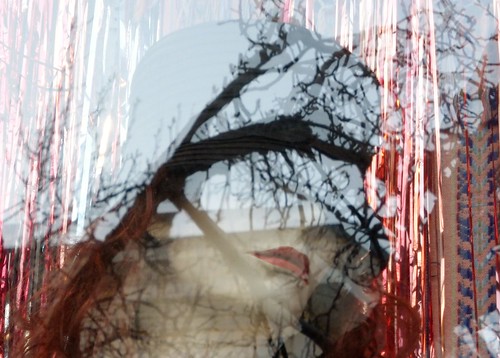
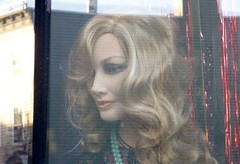
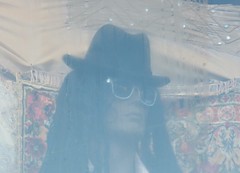
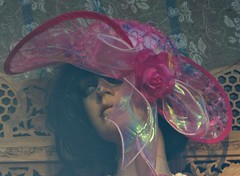
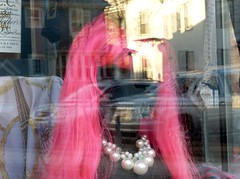
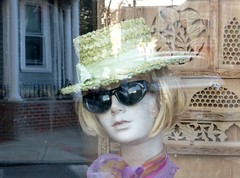
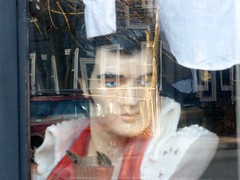
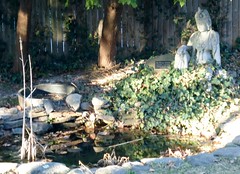
Apr 19, 2015 at 9:20 pm
zen doesn’t really make any sense unless in the celibate context !
that’s where the great masters come from, there’s only one or two exceptions in the whole history of zen, like Ikkyū who on closer inspection was likely celibate until about 30 !
if you think layman pang (the story of!) is one of those exceptions, then read more closely, it’s like a book of job with a bad ending ! :o)
LikeLike
Apr 20, 2015 at 12:00 am
Well said Lorianne, Well, I never knew that there was such a thing as a Zennie, but I quite possibly am one at heart! 🙂 I might loan the term! Love your writing style!
LikeLike
Apr 20, 2015 at 3:42 am
Interesting, this post, because it makes me wonder where I might have taken a wrong turn in my own interreligious studies. Buddhism, at least in contrast with Christianity, has always struck me as having much more of a self-help point of view than, say, Christianity does. Christianity demands certain beliefs and actions of its believers, true, but behind it all stands the idea of an all-compassionate deity who alone holds the power of salvation. The Buddha’s final words were, reportedly, “Work out your salvation with diligence!”—again a contrast with Christian praxis. It was almost as if, before slipping into parinirvana, the Buddha were saying, “That’s it, kids—you’re on your own. In fact, you’ve always been on your own.” (More on this idea of being “on your own” here, where the blogger also notes that “Work out your salvation with diligence” may in fact be a very, very liberal translation of the teacher’s final utterance. That same post also notes that the Buddha may not have been aiming so much at self-help as at “each-other” help, hence the notion of a sangha, a community of human interconnection.)
I vaguely recall learning, in a course on Hinduism, that some Hindus, when it comes to salvation/liberation, divide themselves into two schools: the “cat” school and the “monkey” school. The idea is that a mother cat picks her kittens up in her mouth and carries them away from danger, whereas a monkey will wait for her offspring to scamper onto her back: the offspring essentially rescue themselves. Adherents of the cat school thus wait for divine deliverance, while monkey-school adherents know that they need to work out their moksha through self-power, not other-power.
In any event, your post provided a fresh perspective that shined light on what may be some erroneous assumptions on my part. Much to think about. Thanks for writing this.
LikeLike
Apr 20, 2015 at 8:30 pm
A Buddhist would say you have to rescue yourself; a Zennie would say you’re already rescued. 🙂
LikeLike
Apr 20, 2015 at 11:45 am
I would really like to read that Ehrenreich book. I’ve heard of it before and still haven’t tackled it.
It’s human nature to aspire, isn’t it? I don’t even think it’s exclusively American, though maybe it’s ESPECIALLY American. It seems like so many magazines, books and movies are all about what we WISH we had/were/could do.
LikeLike
Apr 20, 2015 at 1:25 pm
I loved the “fairy tale for adults” reference, in that it feels so accurate and perfectly draws the picture without denigrating the experience. I was once a Self Help books enthusiast with an almost rabid fervor for covering as much territory as possible, especially as it related to healing from prior trauma. In the end, my interest in them waned, when I finally got around to realizing that it really WAS about the action, and not about the reading, although to be honest, I still sometimes pick up a new fairy tale every now and then, especially when I’m in the mood for daydreaming and happy endings. 🙂
LikeLike
Apr 29, 2015 at 7:17 am
I totally second ntexas’ opinion.
I bought into Gretchen Rubin’s book and project, then even bought (on sale) her second book Happier at home, but something grated on me, like a continuous anxiety of missing out, of crossing off everything from the happiness to-do-list, that made me kind of uncomfortable.
In French culture, positive thinking is thought as too naive, grouching and complaining is the norm, without really trying to improve one’s own situation. That’s why, coming from a different horizon, I so enjoy American fairy tales of self-help books.
LikeLiked by 1 person